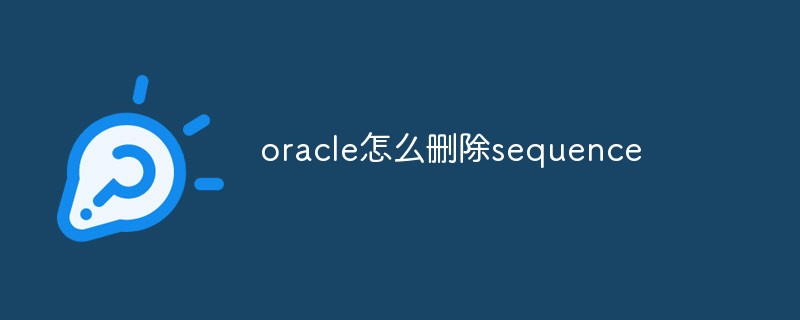原文传送门:http://blog.csdn.net/wh62592855/archive/2009/11/06/4776631.aspx 记得以前在论坛里看到inthirties用到过WITH AS这个字眼,当时没特别在意。今天在一个帖子里又看到有人用这个,所以就去网上搜了搜相关内容,自己小试了一把,写下来,方便以后
原文传送门:http://blog.csdn.net/wh62592855/archive/2009/11/06/4776631.aspx
记得以前在论坛里看到inthirties用到过WITH AS这个字眼,当时没特别在意。今天在一个帖子里又看到有人用这个,所以就去网上搜了搜相关内容,自己小试了一把,写下来,方便以后忘了的话学习。
===================================================================================
先举个例子吧:
有两张表,分别为A、B,求得一个字段的值先在表A中寻找,如果A表中存在数据,则输出A表的值;如果A表中不存在,则在B表中寻找,若B表中有相应记录,则输出B表的值;如果B表中也不存在,则输出"no records”字符串。
再举个简单的例子
with a as (select * from test)
select * from a;
其实就是把一大堆重复用到的SQL语句放在with as 里面,取一个别名,后面的查询就可以用它
这样对于大批量的SQL语句起到一个优化的作用,而且清楚明了
下面是搜索到的英文文档资料
About Oracle WITH clause
Starting in Oracle9i release 2 we see an incorporation of the SQL-99 “WITH clause”, a tool for materializing subqueries to save Oracle from having to re-compute them multiple times.
The SQL “WITH clause” is very similar to the use of Global temporary tables (GTT), a technique that is often used to improve query speed for complex subqueries. Here are some important notes about the Oracle “WITH clause”:
• The SQL “WITH clause” only works on Oracle 9i release 2 and beyond.
• Formally, the “WITH clause” is called subquery factoring
• The SQL “WITH clause” is used when a subquery is executed multiple times
• Also useful for recursive queries (SQL-99, but not Oracle SQL)
To keep it simple, the following example only references the aggregations once, where the SQL “WITH clause” is normally used when an aggregation is referenced multiple times in a query.
We can also use the SQL-99 “WITH clause” instead of temporary tables. The Oracle SQL “WITH clause” will compute the aggregation once, give it a name, and allow us to reference it (maybe multiple times), later in the query.
The SQL-99 “WITH clause” is very confusing at first because the SQL statement does not begin with the word SELECT. Instead, we use the “WITH clause” to start our SQL query, defining the aggregations, which can then be named in the main query as if they were “real” tables:
WITH
subquery_name
AS
(the aggregation SQL statement)
SELECT
(query naming subquery_name);
Retuning to our oversimplified example, let’s replace the temporary tables with the SQL “WITH clause”:
WITH
sum_sales AS
select /*+ materialize */
sum(quantity) all_sales from stores
number_stores AS
select /*+ materialize */
count(*) nbr_stores from stores
sales_by_store AS
select /*+ materialize */
store_name, sum(quantity) store_sales from
store natural join sales
SELECT
store_name
FROM
store,
sum_sales,
number_stores,
sales_by_store
where
store_sales > (all_sales / nbr_stores)
;
Note the use of the Oracle undocumented “materialize” hint in the “WITH clause”. The Oracle materialize hint is used to ensure that the Oracle cost-based optimizer materializes the temporary tables that are created inside the “WITH” clause. This is not necessary in Oracle10g, but it helps ensure that the tables are only created one time.
It should be noted that the “WITH clause” does not yet fully-functional within Oracle SQL and it does not yet support the use of “WITH clause” replacement for “CONNECT BY” when performing recursive queries.
To see how the “WITH clause” is used in ANSI SQL-99 syntax, here is an excerpt from Jonathan Gennick’s great work “Understanding the WITH Clause” showing the use of the SQL-99 “WITH clause” to traverse a recursive bill-of-materials hierarchy
The SQL-99 “WITH clause” is very confusing at first because the SQL statement does not begin with the word SELECT. Instead, we use the “WITH clause” to start our SQL query, defining the aggregations, which can then be named in the main query as if they were “real” tables:
WITH
subquery_name
AS
(the aggregation SQL statement)
SELECT
(query naming subquery_name);
Retuning to our oversimplified example, let’s replace the temporary tables with the SQL “WITH” clause”:
=================================================================================
下面自己小试一把,当然,一点都不复杂,很简单很简单的例子,呵呵。
好了就先记这些吧,以后看到了新的用法再补充。
 什么是oracle asmApr 18, 2022 pm 04:16 PM
什么是oracle asmApr 18, 2022 pm 04:16 PMoracle asm指的是“自动存储管理”,是一种卷管理器,可自动管理磁盘组并提供有效的数据冗余功能;它是做为单独的Oracle实例实施和部署。asm的优势:1、配置简单、可最大化推动数据库合并的存储资源利用;2、支持BIGFILE文件等。
 oracle怎么查询所有索引May 13, 2022 pm 05:23 PM
oracle怎么查询所有索引May 13, 2022 pm 05:23 PM方法:1、利用“select*from user_indexes where table_name=表名”语句查询表中索引;2、利用“select*from all_indexes where table_name=表名”语句查询所有索引。
 Oracle怎么查询端口号May 13, 2022 am 10:10 AM
Oracle怎么查询端口号May 13, 2022 am 10:10 AM在Oracle中,可利用lsnrctl命令查询端口号,该命令是Oracle的监听命令;在启动、关闭或重启oracle监听器之前可使用该命令检查oracle监听器的状态,语法为“lsnrctl status”,结果PORT后的内容就是端口号。
 oracle全角怎么转半角May 13, 2022 pm 03:21 PM
oracle全角怎么转半角May 13, 2022 pm 03:21 PM在oracle中,可以利用“TO_SINGLE_BYTE(String)”将全角转换为半角;“TO_SINGLE_BYTE”函数可以将参数中所有多字节字符都替换为等价的单字节字符,只有当数据库字符集同时包含多字节和单字节字符的时候有效。
 oracle怎么删除sequenceMay 13, 2022 pm 03:35 PM
oracle怎么删除sequenceMay 13, 2022 pm 03:35 PM在oracle中,可以利用“drop sequence sequence名”来删除sequence;sequence是自动增加数字序列的意思,也就是序列号,序列号自动增加不能重置,因此需要利用drop sequence语句来删除序列。
 oracle怎么查询数据类型May 13, 2022 pm 04:19 PM
oracle怎么查询数据类型May 13, 2022 pm 04:19 PM在oracle中,可以利用“select ... From all_tab_columns where table_name=upper('表名') AND owner=upper('数据库登录用户名');”语句查询数据库表的数据类型。
 oracle查询怎么不区分大小写May 10, 2022 pm 05:45 PM
oracle查询怎么不区分大小写May 10, 2022 pm 05:45 PM方法:1、利用“LOWER(字段值)”将字段转为小写,或者利用“UPPER(字段值)”将字段转为大写;2、利用“REGEXP_LIKE(字符串,正则表达式,'i')”,当参数设置为“i”时,说明进行匹配不区分大小写。
 Oracle怎么修改sessionMay 13, 2022 pm 05:06 PM
Oracle怎么修改sessionMay 13, 2022 pm 05:06 PM方法:1、利用“alter system set sessions=修改后的数值 scope=spfile”语句修改session参数;2、修改参数之后利用“shutdown immediate – startup”语句重启服务器即可生效。


Hot AI Tools

Undresser.AI Undress
AI-powered app for creating realistic nude photos

AI Clothes Remover
Online AI tool for removing clothes from photos.

Undress AI Tool
Undress images for free

Clothoff.io
AI clothes remover

AI Hentai Generator
Generate AI Hentai for free.

Hot Article

Hot Tools

EditPlus Chinese cracked version
Small size, syntax highlighting, does not support code prompt function

Dreamweaver Mac version
Visual web development tools

ZendStudio 13.5.1 Mac
Powerful PHP integrated development environment

SublimeText3 Mac version
God-level code editing software (SublimeText3)

mPDF
mPDF is a PHP library that can generate PDF files from UTF-8 encoded HTML. The original author, Ian Back, wrote mPDF to output PDF files "on the fly" from his website and handle different languages. It is slower than original scripts like HTML2FPDF and produces larger files when using Unicode fonts, but supports CSS styles etc. and has a lot of enhancements. Supports almost all languages, including RTL (Arabic and Hebrew) and CJK (Chinese, Japanese and Korean). Supports nested block-level elements (such as P, DIV),






